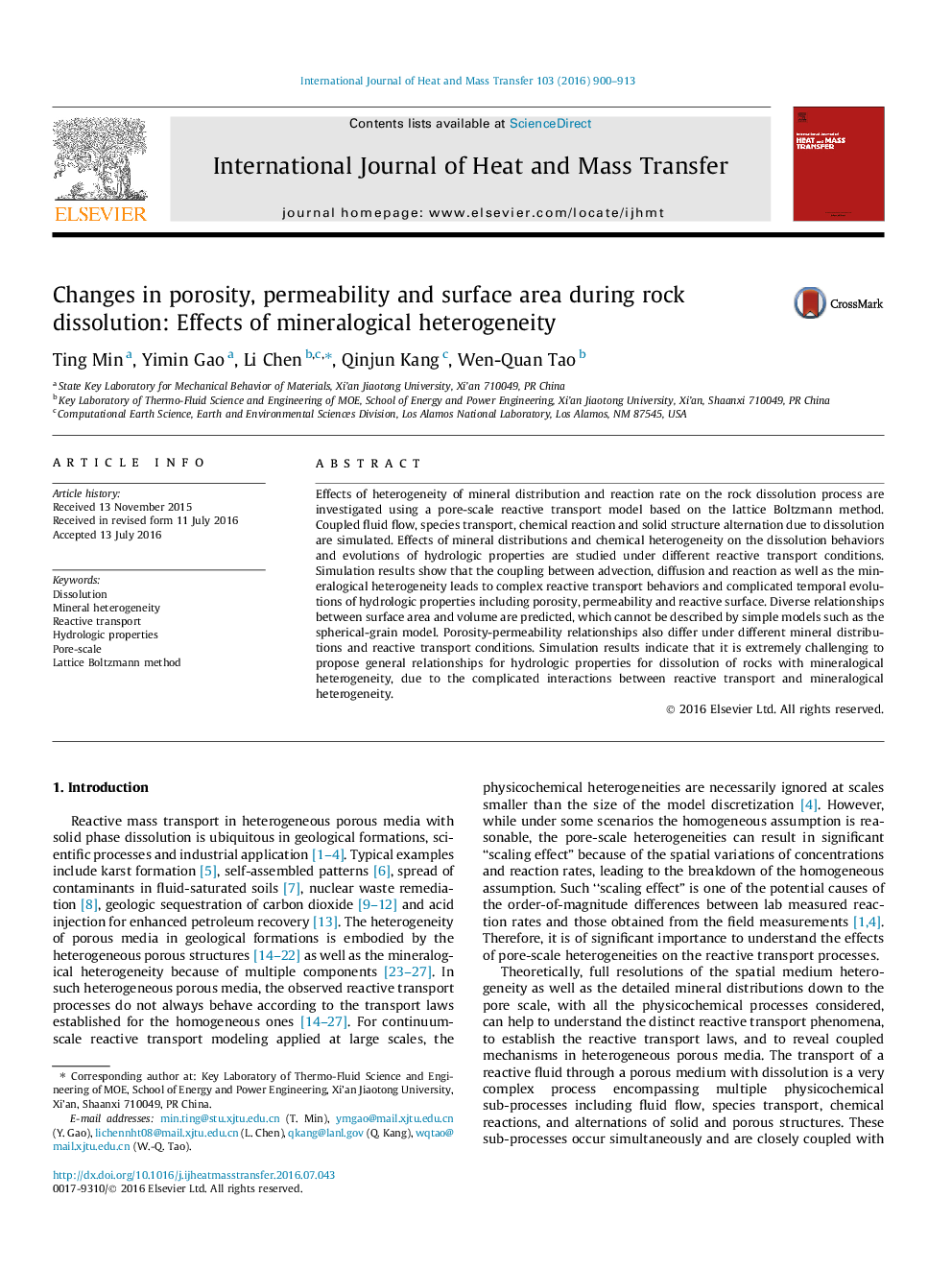| Article ID | Journal | Published Year | Pages | File Type |
|---|---|---|---|---|
| 7055218 | International Journal of Heat and Mass Transfer | 2016 | 14 Pages |
Abstract
Effects of heterogeneity of mineral distribution and reaction rate on the rock dissolution process are investigated using a pore-scale reactive transport model based on the lattice Boltzmann method. Coupled fluid flow, species transport, chemical reaction and solid structure alternation due to dissolution are simulated. Effects of mineral distributions and chemical heterogeneity on the dissolution behaviors and evolutions of hydrologic properties are studied under different reactive transport conditions. Simulation results show that the coupling between advection, diffusion and reaction as well as the mineralogical heterogeneity leads to complex reactive transport behaviors and complicated temporal evolutions of hydrologic properties including porosity, permeability and reactive surface. Diverse relationships between surface area and volume are predicted, which cannot be described by simple models such as the spherical-grain model. Porosity-permeability relationships also differ under different mineral distributions and reactive transport conditions. Simulation results indicate that it is extremely challenging to propose general relationships for hydrologic properties for dissolution of rocks with mineralogical heterogeneity, due to the complicated interactions between reactive transport and mineralogical heterogeneity.
Related Topics
Physical Sciences and Engineering
Chemical Engineering
Fluid Flow and Transfer Processes
Authors
Ting Min, Yimin Gao, Li Chen, Qinjun Kang, Wen-wQuan Tao,
